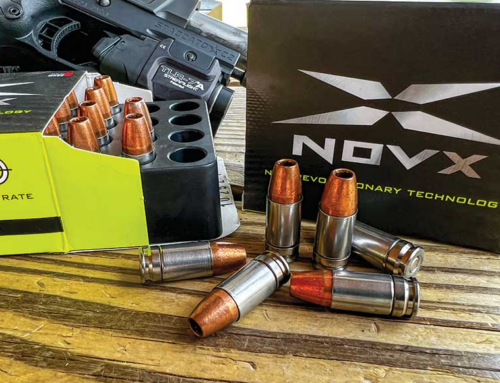
The slower and heavier 147-grain 9mm projectiles worked just fine in the Clear Ballistics 10% gel block test.
With the ever-shifting threat environment, it seems that much of the concealed carry community is making another quantum shift towards the Wonder Nine.
Today’s self-defense ammunition isn’t your daddy’s ball ammo anymore, and if you take and honest and very objective look at actual performance metrics like one-shot-stop percentage, lethality, and the number of rounds to incapacitate, you’ll find that there just isn’t much performance difference between the most common handgun calibers. Not to burst the bubble, but .45 ACP is not 19 times better than 9mm, nor is .40 S&W 83 times more potent than .380 ACP. The math of after action analysis just doesn’t reflect a big difference. What that means is that, assuming you choose quality defensive ammunition, caliber or size of the hole is no longer the primary consideration.
With that said, we have more flexibility to evaluate other caliber-related criteria to help make the best possible choice for our carry or home defense needs. For example, cost, availability, recoil, accuracy, noise, and muzzle flash might all enter into our decision criteria.
One factor that I’ve been pondering recently from a home-defense perspective is subsonic performance. Think about it. If you invest the waiting time and are willing to dutifully send your $200 to Uncle Spendy, you can stick a silencer on your home defense pistol.

Accurate? Well, yeah.
If you’ve ever torched off a handgun indoors of anything, you know it’s loud. Well, actually deafening. While long-term hearing damage may be the least of your worries in during a home invasion, the disorientation that comes with isn’t. In the subsonic case, not only is there no supersonic bullet crack, the suppressor wipes out a great deal of the gas expansion “bang.







Got something to say?